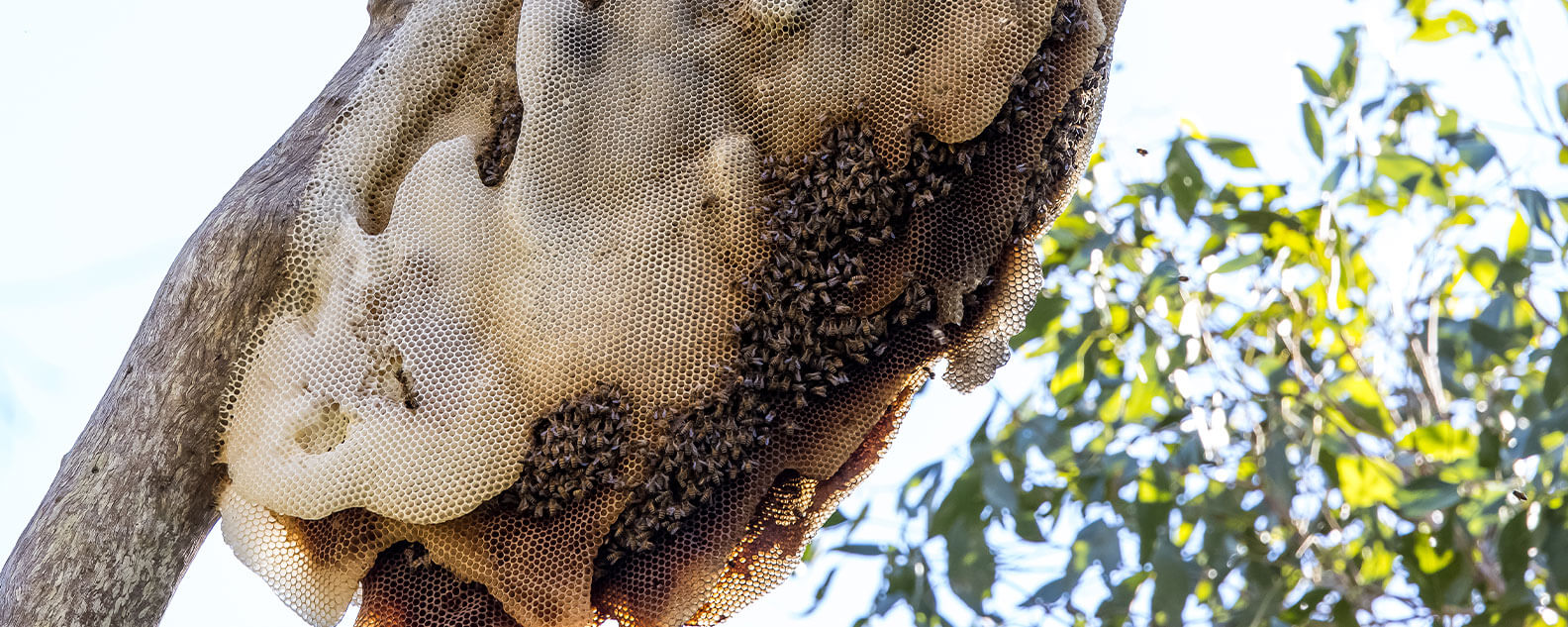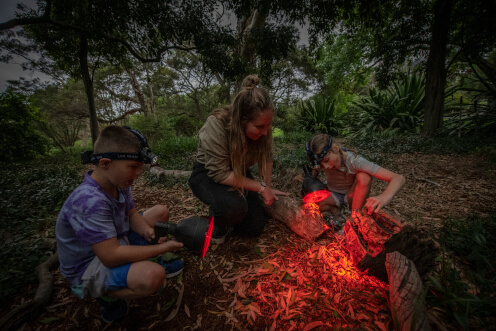
Stage 1, 2 and 3
Science and Geography
2 hours
Minimum charges apply. Discounts apply for full day programs!
The Sydney area hosts over 200 amazing native bee species, vital for pollination and ecosystem function.
Stimulate curiosity about these amazing pollinators in this dynamic hands-on workshop and engaging presentation aligned to meet NSW Science and Technology and Geography syllabuses for Stage 1, 2 or 3.
Please note: this is a special new program run by Kids Connecting Nature and has a different format to other Botanic Gardens of Sydney excursion programs. For each 2 hour booking you will receive approximately 1.5 hours of face-to-face presentation and workshop, and are given approximately 30-minutes for a self-guided walk of the nearby gardens to look for bees and complete pollinator-related activities. A map and activity resources will be provided for the self-guided part of the excursion.
Students will
Observe a fascinating collection of preserved local invertebrate specimens using magnification, before exploring the Garden to look for living pollinators.
Key content
- Understand what makes bees unique via their diversity, needs, behaviour and life cycles.
- Describe links between sustainability and biodiversity and the role that bees play in both.
- Understand the reasons why habitat for pollinators is under threat.
- Reinforce essential environmental themes appropriate for each Stage.
- Select appropriate materials to meet design criteria for a bee hotel.
Links to New South Wales curriculum
Focus Syllabus Outcomes
Stage 1
Science and Technology
- Describes external features, changes in and growth of living things (ST1-10LW)
- Describes ways that different places in the environment provide for the needs of living things (ST1-11LW)
- Uses a structured design process, everyday tools, materials, equipment and techniques to produce solutions that respond to identified needs and wants (ST1-5WT)
Geography
- Describes features of places and the connection people have with places (GE1-1)
- Identifies ways in which people interact with and care for places (GE1-2)
Stage 2
Science and Technology
- Describes that living things have life cycles, can be distinguished from non-living things and grouped, based on their observable features (ST2-10LW)
- Describes ways that science knowledge helps people understand the effect of their actions on the environment and on the survival of living things (ST2-11LW)
- Applies a design process and uses a range of tools, equipment, materials and techniques to produce solutions that address specific design criteria (ST2-5WT)
Geography
- Examines features and characteristics of places and environments (GE2-1)
- Describes the ways people, places and environments interact (GE2-2)
- Examines differing perceptions about the management of places and environments (GE2-3)
Stage 3
Science and Technology
- Describes how structural features and other adaptations of living things help them to survive in their environment (ST3-10LW)
- Describes some physical conditions of the environment and how these affect the growth and survival of living things (ST3-11LW)
- Plans and implements a design process, selecting a range of tools, equipment, materials and techniques to produce solutions that address the design criteria and identified constraints (ST3-5WT)
Geography
- Describes the diverse features and characteristics of places and environments (GE3-1)
- Explains interactions and connections between people, places and environment (GE3-2)
- Compares and contrasts influences on the management of places and environments (GE3-3)

Observe a fascinating collection of preserved local invertebrate specimens using magnification before exploring the Garden to look for living pollinators.
Related excursions

Experience the Garden and its fascinating nightlife on this adventure by torchlight.

Based on Katrina Germein’s book Big Rain Coming, students will explore how First Nations people read and understand daily and seasonal weather changes and how this affects the places and environments around us.

Students will investigate a wide variety of local native plants that are integral in the life of First Nations peoples, exploring how these plants contribute to sustainability practices and the preservation of natural resources.